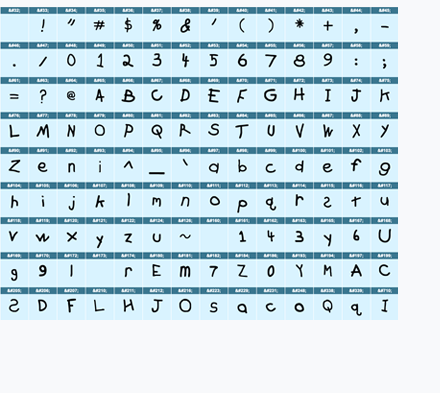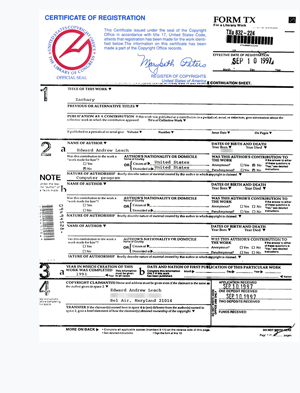
The software I used to create The Zachary Font, was called Fontographer. I believe I was using version 2.0, but can’t really remember. My Mac Classic computer had a tiny monitor. It was black and white monochrome and measured nine inches. I had to sit pretty close to the screen, but it was perfect for what I was about to do.
 There were plenty of other “handwriting” fonts available when I decided on making my own. The problem with most of them was that every character looked the same. That is, if there were two e’s together in the same word it was obvious that it was a font, and not “handwriting”. The e’s looked the same when placed next to each other. In fact anytime a character was repeated in the same sentence the problem was there. My thought was to create an alternate character set which could be used to avoid this problem. Unfortunately there are a limited number of keystrokes available on any computer keyboard. I had to choose the most commonly used characters. Of course, I did no research whatsoever as to which are the most used characters. I just picked a few and went to it.
There were plenty of other “handwriting” fonts available when I decided on making my own. The problem with most of them was that every character looked the same. That is, if there were two e’s together in the same word it was obvious that it was a font, and not “handwriting”. The e’s looked the same when placed next to each other. In fact anytime a character was repeated in the same sentence the problem was there. My thought was to create an alternate character set which could be used to avoid this problem. Unfortunately there are a limited number of keystrokes available on any computer keyboard. I had to choose the most commonly used characters. Of course, I did no research whatsoever as to which are the most used characters. I just picked a few and went to it.
All of the characters were created on-screen. That is, I did not scan a hand-drawn image or use any other form of tracing. This gave the characters an interesting look.
 With the font all finished, it was time to put it out there. I used AOL and Compuserve at the time. There were several Macintosh User’s groups on those platforms, so it was easy to get started sharing. The font itself was packaged with a “read-me” file. Here you can see a print-out of the original read-me file, including a nice thank you note from a fellow shareware user. If you read the text of that file, you’ll see that I also branched a bit with an offer to create a font of your own handwriting. I did that for five or six people. It was a lot of work, but I really enjoyed doing it.
With the font all finished, it was time to put it out there. I used AOL and Compuserve at the time. There were several Macintosh User’s groups on those platforms, so it was easy to get started sharing. The font itself was packaged with a “read-me” file. Here you can see a print-out of the original read-me file, including a nice thank you note from a fellow shareware user. If you read the text of that file, you’ll see that I also branched a bit with an offer to create a font of your own handwriting. I did that for five or six people. It was a lot of work, but I really enjoyed doing it.
Soon after the first posting of my font package, it began to go viral. That is, as “viral” as possible in 1992. The font package showed up on CD ROMs which were inserted into computer magazines. After that started happening, the font made it around the world in short order.
Since then, the font was been replicated many times, and offered for download. Most of the sites that offer it do not give me credit for my work. Some do. Few of them include the shareware fee information. I applied for a U.S. Copyright for the font in 1993, and was granted a copyright in 1997.